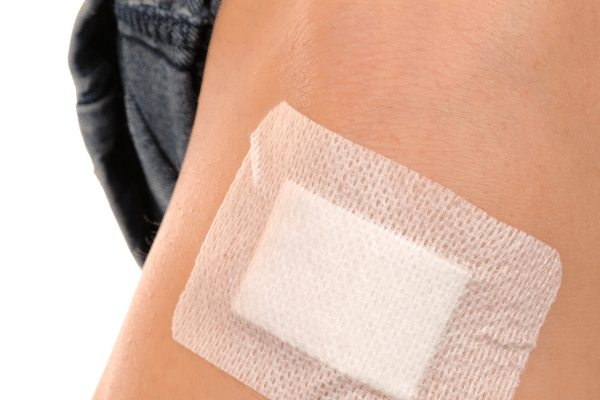What is the use of wound dressing? How should the wound be properly debrided?
2021-03-22
Wound dressings are used for wound debridement to protect the wound, inhibit bacteria and promote healing and prevent scar formation.
Wound debridement is an essential part of the care period, and the removal of inactive tissue is a prerequisite for wound healing. The purpose is to remove the putrefied flesh and bacteria that impede wound healing from the hotbed, and also to provide evidence for the effective and correct assessment of the staging and extent of pressure injuries; reduce the number of wound toxins and bacteria, facilitate control of exudate, eliminate odour, and promote the growth of granulation tissue.

There are two steps in the debridement of a wound.
In the first step, the wound is given strict irrigation and disinfection. After repeatedly rinsing the wound with saline and hydrogen peroxide, the wound is rinsed at least three times to clean the contaminated deposits or surface impurities inside. Then the wound is repeatedly disinfected with iodophor or alcohol.
The second step is to remove the contaminants or necrotic tissues inside, such as residual impurities that cannot be washed away by rinsing, stuck in the skin or subcutaneous soft tissues, which must be cut away with tissue scissors. If the skin edges are irregular and untidy, they must be trimmed neatly and then sutured later.
Commonly used debridement methods include: self-soluble debridement, mechanical debridement (physical debridement), and conservative sharp debridement
1.Self-soluble debridement: Using wet healing theory, using wet wound dressing to dissolve necrotic tissue or dissolve inactivation is called self-soluble debridement. Applicable to yellow rotting flesh or black dry crusted necrotic tissue pressure injury.
Usage: After wound cleaning, cover the area of necrotic tissue with carbon spray wet gauze in the wound bed to protect the wound surface, create a sterile wet environment and promote wound healing.
2.Mechanical debridement (physical debridement): remove tissue fragments, putrefied flesh, impurities, foreign bodies, etc., from the wound by scraping with instruments, rinsing with water, and using in combination with a wet or dry wound dressing to make the wound bed clean. It is suitable for pressure injuries covered with dirt or aging, deposition of putrefied flesh and fibrous tissue, loose adhesion of necrotic tissue, or hydration and dissolution. It is more effective when used in combination with self-soluble debridement.
Application: Depending on the degree of necrotic tissue dissolution and hydration, use water flushing or dry/wet dressing to clear the wound and remove with a spatula when the necrotic tissue becomes sparse. If the necrotic tissue is only softened and cannot be easily removed, add a wet dressing for autolysis. The combination of the two is more effective.
3.Conservative sharps debridement
It removes necrotic and loose non-vascular tissues by using sterile sharp instruments such as scissors, scalpel, vascular forceps, etc., in stages under aseptic operation.
For wound debridement, self-soluble debridement and mechanical debridement can be performed together, which is effective and can promote wound healing. Wet wound dressings effectively dissolve necrotic tissue, promote the growth and repair of new granulation, facilitate wound healing, and prevent scar formation.
Maysino is recognized as a leading manufacturer of wound dressings/waterproof wound dressings, and our products are manufactured by our professionals using high-quality biocompatible materials and superior technology. Also, our wound dressings are available in various sizes to meet the different requirements of our customers.
Please contact us if you need assistance.

